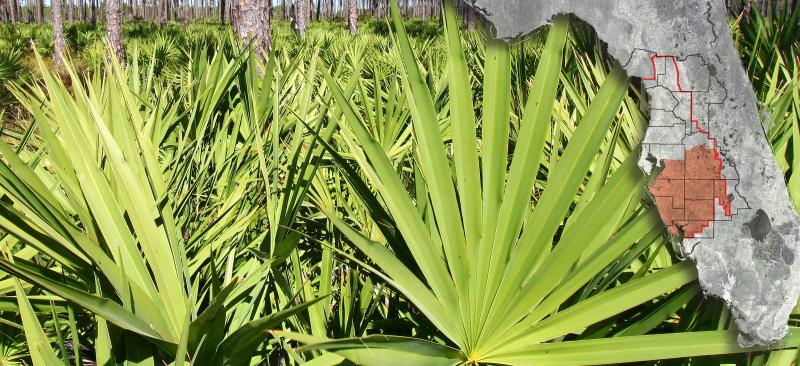This project will investigate the recharging of excess surface water, treated to primary drinking water standards, into the Upper Floridan aquifer more than 1,000 feet below the land’s surface. The recharged water has the potential to help improve groundwater levels and reduce the rate of saltwater intrusion from the Gulf of America in the SWUCA’s Most Impacted Area.
SWUCA Recovery and Natural System Improvement
In 2017, the District conducted a feasibility study at Flatford Swamp in Manatee County that evaluated an aquifer recharge project using excess surface water draining into Flatford Swamp.
The Flatford Swamp project may help recover groundwater levels by recharging up to 2 mgd in the Most Impacted Area of the SWUCA and could reduce the rate of saltwater intrusion.
Staff has implemented a step-by-step analysis conducting additional data collection, monitoring, and integrated modeling to ensure the project concept is thoroughly evaluated.
The test well site will provide the District with operational testing data and insight into the effectiveness of the project.
Project Details
In January 2017, the District held a public meeting prior to FDEP’s issuance of a permit. In April 2017, the District’s Governing Board unanimously approved the project. During late 2017 and early 2018, staff worked on sampling the source water as well as retaining a consultant engineer and a driller.
During the stakeholder engagement process, the District received inquiries from the agricultural community about water quality. In coordination with the UF/IFAS Plant Diagnostic Center, District staff confirmed that there was no presence of Phytophthora, a mold that could impact certain agricultural crops, in the surface water. Testing continued twice a year for approximately four years. Considering continuous negative results, phytophthora sampling stopped at the end of 2021.
Rowe Drilling conducted drilling on one recharge well and three monitoring wells at the Flatford site and completed drilling activities in April of 2019. Jones Edmonds completed the design of the diversion infrastructure and TLC Diversified began construction in August 2020.
The majority of the construction of the diversion infrastructure was completed in September 2021. This included the installation of the borehole control valve, and construction of the intake structure, recharge building, recharge pump, and chemical feed shed. Following May 2021 permitting discussions with FDEP, staff implemented a new treatment concept that included the use of chloramines for disinfection and Sodium Bisulfite (SBS) for dissolved oxygen removal. Construction of this chemical treatment system is completed.
The operational testing phase officially commenced on June 23, 2023. Testing includes close observation of water quality at the monitoring wells and of the recharge water. Operations ceased shortly after for a full year while troubleshooting and repairing issues on site. In July of 2024 these repairs were completed and operations resumed on July 16, 2024.
A wetland monitoring project is also being conducted by District staff to track any changes in hydrology and/or vegetation that may be influenced by operational testing of the recharge well.
The District will continue to work with key stakeholders and other interested parties. Please contact the project manager with any questions.
Project Schedule
Step 1: Desktop and modeling evaluation. Permit test well. – Complete
Step 2: Drill test and monitor wells. Collect aquifer characteristics and water quality. – Complete
Step 3: Conduct pilot study and construct diversion infrastructure. – Complete
Step 4: Construct disinfection system. – Complete
Step 5: Begin operational testing of recharge well. Continue appropriate testing. – Ongoing
Step 6: Evaluate testing results. – Will occur 2025
Project Updates
- Work has completed to remediate issues experienced on site. Operational testing has commenced on July 16, 2024. (As of July 2024)

